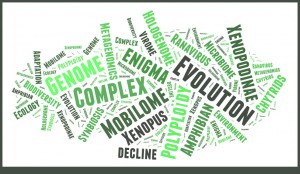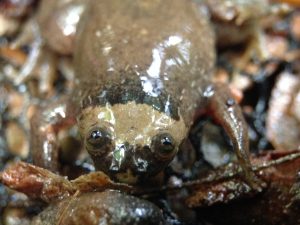Themes
Genome evolution follows numerous ways in parallel. For example, when a host and its microbiome are considered it is the hologenome (the genome constituted of the host and the microbial community) that will adapt and evolve. How it does it, is one of our research interest. Moreover, genomes can reach a large size. We will investigate how the genome structure react to polyploidisation and how the elements which are involved in the dynamic structure of these genomes are regulated.
 The scientific question that we tackle is the comparative and evolutive study of the complexity of genome structure in the amphibians. In particular we focus on 3 main themes:
The scientific question that we tackle is the comparative and evolutive study of the complexity of genome structure in the amphibians. In particular we focus on 3 main themes:
- The metagenomes as a genome community of species living in tight interaction (commensalism, symbiosis, parasitism…).
- Genomes of extreme size and the enigma of the C value (polyploidisation, re-diploidisation, B-chromosome, repeated DNA…).
- The dynamic of genome (B chromosome, mosaicisation inside an individual, horizontal transfer, polymorphisms, germinal-somatic rearrangements ).
What are the life histories determining the complexity of genomes? New and big data are now available, thanks to massive parallel sequencing technologies. Biologists can produce relevant data sets starting from relevant biological models.
Team members
- Nicolas Pollet, CNRS researcher.
- Jonathan Filée, CNRS researcher.
- Jean-Michel Rossignol, Emeritus Professor, University Paris-Sud.
- Isabelle Clavereau, CNRS Technician.
- Jean-Bernard Emond, CNRS Engineer.
Alumni
- Thibault Scalvenzi, PhD student, GAO University of’Evry-Val d’Essonne. Now at Pasteur Institute

